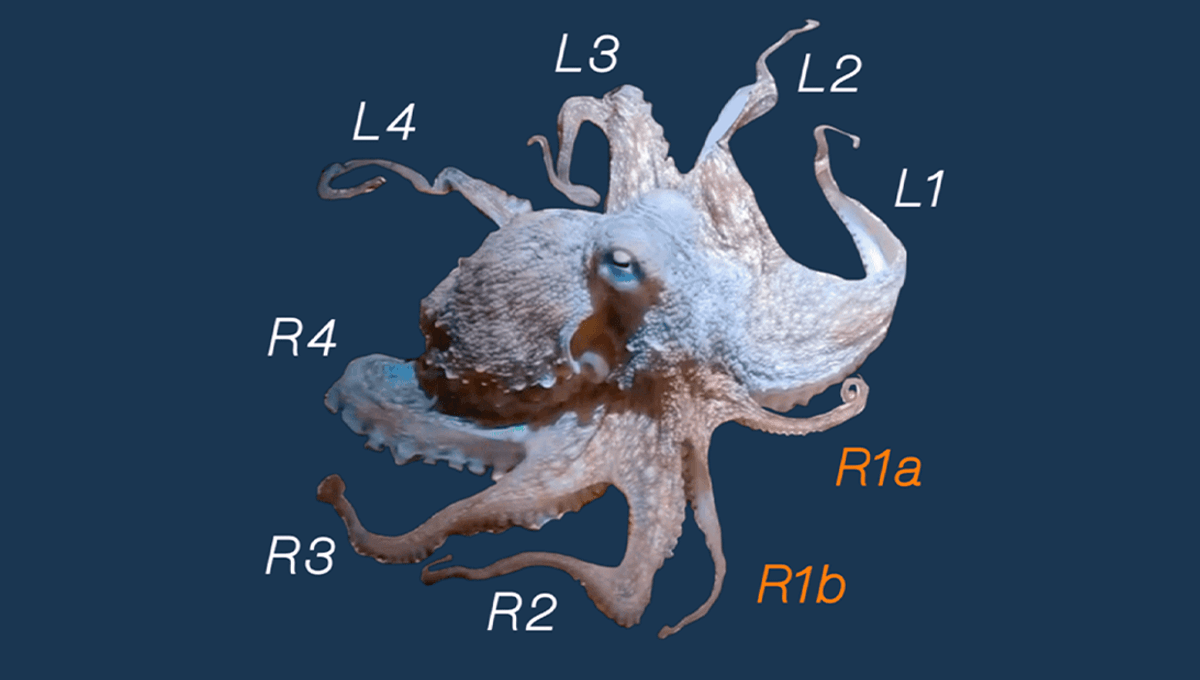As well as being super clever, breaking our hearts in that Netflix show and even riding sharks, octopuses are pretty famous for having eight limbs. What is even more remarkable is that they can regrow lost limbs and even have arms that split during the regrowth process. What scientists are trying to work out is how these regrown and spilt limbs are used by the octopuses, and now they’ve had the opportunity to find out.
The team had a rare opportunity to study a male common octopus (Octopus vulgaris) that had lost three arms in what they believe to be a past encounter with a predator. The octopus had lost the tips of two other arms during this incident. Two of the arms regrew normally; however, the first arm on the right side bifurcated, meaning it split into two, giving the octopus a total of nine arms. The team did a series of dives at an inlet cove on the island of Ibiza, Spain during December 2021 to May 2022. During observation of the octopus they recorded different behaviors and how the octopus was using its arms. The researchers categorized the behaviors into “safe”, where the arms were held closer to the body, or “risky”, where the arms were extended away from the body or where there was potential for predator interactions. The team numbered each arm, calling the split arm R1a and R1b, and found that the limbs with the highest usage were L1 and R1a. During movement behaviors such as crawling, the arms behind the octopus's head were more often used, including L4 and R4. For foraging and exploring behaviors, R1a and R1b were used less, however R1b was more likely to be used than R1a. The team also found that the more severely injured arms were less likely to be used in the “risky” behaviors. This suggests that the octopus might have some kind of pain memory. This memory can even be associated with places and has been observed as octopuses avoiding certain locations linked to harmful incidents. Over time the spilt arms took on new functions and were used slightly more, indicating the adaptability of these octopuses. It also highlights how the limbs can react to different stimuli even after regrowth. The study is published in the journal Animals.





